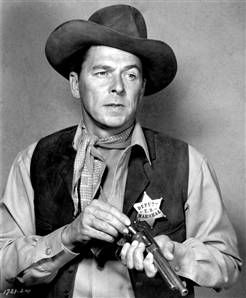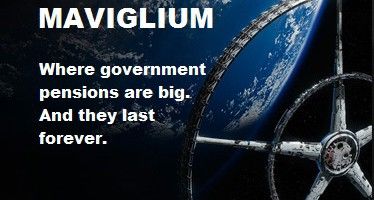Why Republicans Hate Tax Increases

By JOHN SEILER
Republicans are ridiculing President Obama’s call to increase taxes on the rich.
And in California, so far Republicans in the Legislature have resisted siren calls to join Gov. Jerry Brown and the Democratic legislators to back tax increases, or even to put tax increases on the ballot. Why is that?
David Cay Johnston is a well-known investigative reporter formerly with the New York Times. He takes a stab at the story in the S.F. Bay Guardian. (A one-page version is here.)
Unfortunately, he seems not to have done his homework, even though he was born in 1948 and lived through this whole period.
His story is called “The Failed Experiment.” Subtitle: “How misplaced faith in tax cuts and other economic myths are destroying the country”
It begins:
For three decades we have conducted a massive economic experiment, testing a theory known as supply-side economics. The theory goes like this: Lower tax rates will encourage more investment, which in turn will mean more jobs and greater prosperity — so much so that tax revenues will go up, despite lower rates.
Actually the phrase “supply-side economics” was popularized in the 1970s, and formed a major part of the theories behind California’s Proposition 13 tax cuts in 1977 and Ronald Reagan’s tax cuts of 1981 and 1986. But the theory goes back much further than the name.
Two examples include the Harding and Coolidge tax cuts of the 1920s, which put the roar in the Roaring 20s. And President Kennedy’s 1964 tax cuts, enacted the year after he died, which propelled massive growth in the mid-1960s (until President Lyndon Johnson’s 10 percent income surtax of 1968 to pay for the Vietnam War and the Great Society).
Here’s a YouTube of JFK explaining why tax cuts are a great idea:
Confusing supply-side economics and monetarism
Johnston continues:
The late Milton Friedman, the libertarian economist who wanted to shut down public parks because he considered them socialism, promoted this strategy. Ronald Reagan embraced Friedman’s ideas and made them into policy when he was elected president in 1980.
For the past decade, we have doubled down on this theory of supply-side economics with the tax cuts sponsored by President George W. Bush in 2001 and 2003, which President Barack Obama has agreed to continue for two years.
But Milton Friedman was a monetarist, indeed the most famous monetarist of that school of economics, not a supply-side economist. He believed that recessions and depressions, especially one as big as the Great Depression, could be avoided through a steady, controlled increase in the money supply; doing so also would prevent inflation.
Along with Keynesianism, this is one of the two major schools of demand-side economics. As you remember from Econ 101, there are two factors in production, supply and demand. The Keynesians and monetarists seek to ensure growth through the proper management of demand
By contrast, the supply-side economists, as their name implies, seek to ensure growth through making it easier to supply goods and services — that is, to invest in, invent, build and sell goods and services. It’s amazing how many people, including Johnston, can’t see what’s before their eyes: supply-side economics is about supply.
That’s why the supply-siders favor low taxes: That way, producers can invest more in production. Then we all get richer. The supply-siders emphasize that everybody, first, is a producer. You first produce something, then trade it to another producer.
Demand and Monetary Policy
By contrast, other economic theories stress creating demand. That’s why the Federal Reserve Board, under chairmen Alan Greenspan and Ben Bernanke, has been printing money like mad over the past decade, while keeping interest rates low: More dollars printed = more demand = more production = prosperity. At least that’s the theory.
But the problem with Keynesian inflation is that, pretty soon, prices start to soar, smashing producers/consumers. We’re seeing that now with soaring prices for oil, food and other commodities.
Inevitably, to prevent a 1920s Weimar-style inflation, the Fed will have to stop printing so much money, while raising interest rates — which will bring about another deep recession. That’s what happened in 1980-82, when Fed Chairman Paul Volcker shut down the 1970s inflation with two sharp recessions.
By contrast, the supply-siders, along with the somewhat related Austrian school of economics, favor a stable currency, in particular the gold standard. (Austrian economics actually is more popular these days than supply-side economics because of Rep. Ron Paul, a major Austrian adherent.)
It is strange that Johnston’s article doesn’t even deal with monetary policy, even though he lived through the 1970s stagflation (stagnation plus inflatin) economy, which in turn led to the supply-side policies of Prop. 13 and Reagan.
Bush’s Faulty Tax Cuts
Johnston attacked President George W. Bush’s tax cuts of 2001 and 2003. And he notes that President Obama, a Democrat, signed a two-year extension.
But Johnston doesn’t note something essential: Businesses, in the supply-side model, need certainty on tax and other government policy. By definition, a tax cut that expires in a couple of years creates uncertainty.
Businesses usually make plans of at least five years. So when the Bush tax cuts first were enacted, businesses could see that they would enjoy the tax breaks until the late 2000s. But as the 2000s came to a close, it wasn’t clear whether the tax cuts would be extended — or whether taxes would be increased. This was not the major reason for the economic crash of the late 2000s, but it didn’t help.
He also mistakenly includes Bush’s faulty tax cuts in with Reagan’s successful tax cuts, which were mostly permanent. As Johnston himself notes, Reagan brought the top income tax rate down from 70 percent to 28 percent; today it’s 35 percent. That’s about as permanent as one can get for any policy. Thirty years is a lot of time in politics. It helps to distinguish what happened in the 1980s from what happened in the 2000s.
The End of Root-Canal Republicanism
Johnston writes:
Tax policy is something the Framers left to politics. And in politics, the facts often matter less then who has the biggest bullhorn.
Of course, the Framers revolted against a mere tea tax imposed by the British Empire. They never would have tolerated the massive taxes most of us pay today.
And if tax policy is “left to politics,” then Johntson surely must know one reason why Republicans today are so averse to raising taxes: they’ve been burned so many times in the past.
Republicans used to be led by what were called “root-canal Republicans,” such as Bob Dole, President George H.W. Bush and President Richard Nixon. After Democrats enacted massive spending increases and subsequent deficits, the “root-canal Republicans” said, “Look, we’re adults. And adults pay their bills. So, we have to have to increase taxes to close the budget deficits.”
The results: The 1971 “Nixon Shock” included tax increases and inflation that, by 1974, produced a deep recession, followed by the stagflation that continued through the 1970s until Reagan cut taxes in 1981. In 1991, President Bush (the first one) broke his “Read my lips! No new taxes!” pledge, causing the 1991-92 recession.
Bob Dole was branded even by his fellow elephants as “the tax collector of the welfare state.” And in 1996, Dole put forth a tax-cut plan as part of his challenge to incumbent President Clinton. Clinton responded that, in the U.S. Senate, Dole had voted for more than $900 billion in tax increases.
Dole and Bush lost elections, and Nixon was chased from office (with Watergate being the major factor, of course; but the 1974 recession didn’t help Nixon, either).
By contrast, Reagan’s two terms produced strong economic growth. He is fondly remembered today even by liberals who despised him back then.
Even Republicans, never fast on the uptake, finally figured out that, for them, raising taxes is a sucker’s game. That’s why at all levels of government, they almost unanimously oppose tax increases. And they see that tax cuts bring victory at the polls.
Unfortunately, during the years of the second Bush administration (2001-08), Republicans forgot that they needed also to control spending. So deficits set new records, since broken by President Obama’s own record spending. And Bush II, unlike Reagan, allowed the aforementioned inflation of the dollar.
California Tax Increases
California Republicans also have seen how Gov. Pete Wilson’s record 1991 tax increases of $7 billion helped prolong the recession of that year to 1995, when the tax increases expired; that was three years longer than the national recession lasted.
And Republicans also now see how Gov. Arnold Schwarenegger’s record 2009 tax increase of $13 billion did not, as advertised, close the state’s budget deficit, which now stands at $25 billion.
Do You Want to Pay 70 percent in Income Tax?
Johnston goes on at length about how some rich folks don’t pay taxes, and how the middle-class is getting gouged. True enough. He also calls for tax reform. I also used to favor tax reform, but stopped doing so when the “reforms” — such as Bob Dole’s infamous TEFRA of 1982, on which Reagan later admitted he was “snookered” by Dole — end up raising taxes.
The only reform I favor now is cutting tax rates or entirely eliminating taxes. And even for that, I want to look under the hood and kick the tires.
Johnston doesn’t point out that, although the rich got tax cuts under Reagan, so did everybody else — including the middle class.
Johnston also doesn’t consider another key element of Reagan’s supply-side tax cuts: Indexing taxes to inflation. Because of the inflation of the 1970s, middle-class taxpayers had been jammed up into upper-income tax brackets. That’s the real reason middle-class incomes have stagnated since 1971. (Unfortunately, Reagan didn’t back-date the tax indexing to 1971; so the “bracket creep,” as it was called, of 1971-85 remains in place to this day.)
Without Reagan’s tax cuts and tax indexing for inflation, today the middle-class would be paying the 70 percent top tax rates Reagan inherited. Add to that the 15.3 percent Social Security-Medicare tax (including both the employee and employer contributions). And add in the 9.3 percent income tax rate middle-income taxpayer are stuck with in California.
Result: a 94.6 percent tax rate on the middle class in California. Think you could survive on 5.4 percent of your income, Mr. and Mrs. Taxpayer?
If not, then give a little thanks to Ronnie Reagan. He made a lot of mistakes in other areas — especially in not cutting spending very much (spending rose 90 percent in his eight years in office, hence the deficits). But his tax cuts, and the supply-side economic theories behind them, were the right policy, and remain so today.
Related Articles
Gov. Brown boosts energy-policy leverage
Gov. Jerry Brown believes it will take “pragmatic caution” and “active collaboration” to achieve his goal of seeing half of the state’s
Scott Baugh Joins GOP Hypocrites
Steven Greenhut: Orange County Republican Party Chairman Scott Baugh has gained much well-deserved publicity for his “Manifesto” declaring that the
Ruling on Chuck Reed’s pension initiative not end of the world
Editor’s update, 2 p.m.: San Jose Mayor Chuck Reed is reportedly suspending the initiative push until 2016 because the court





